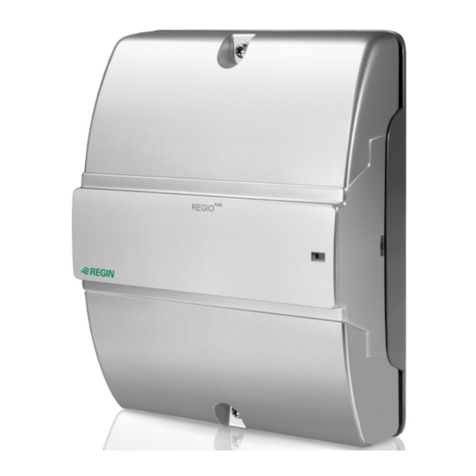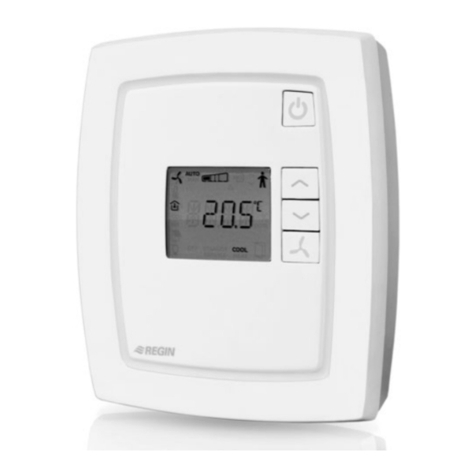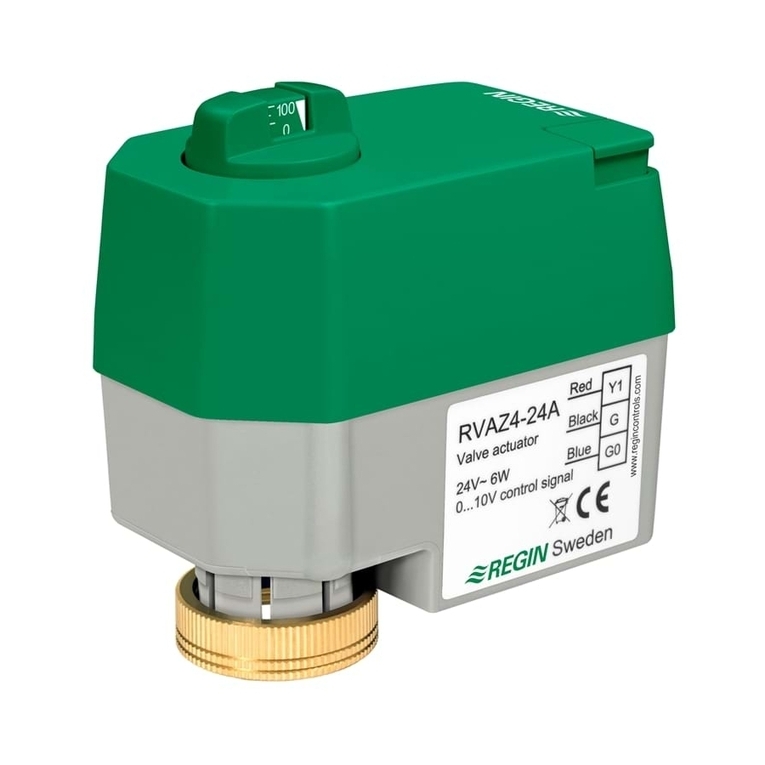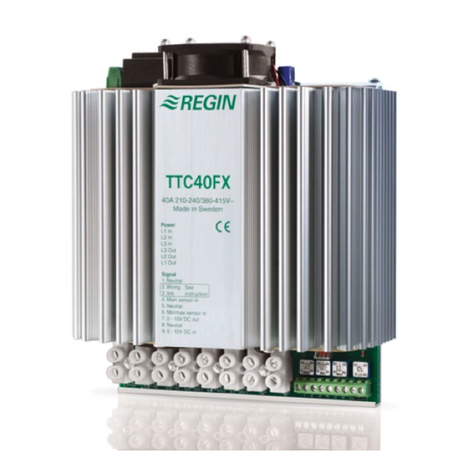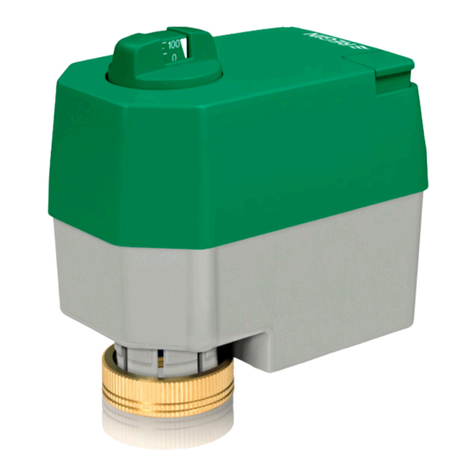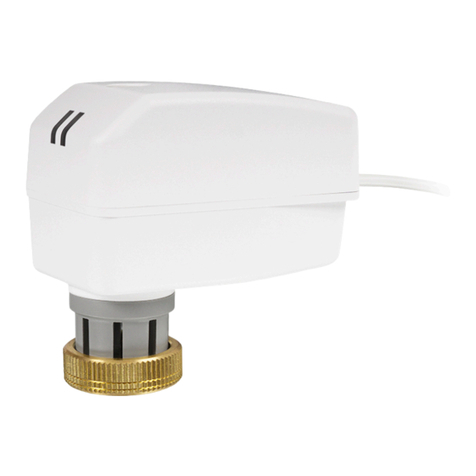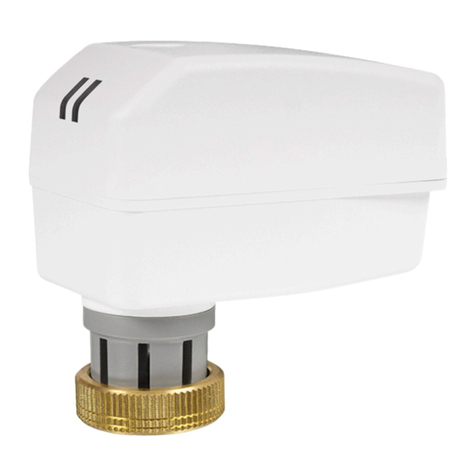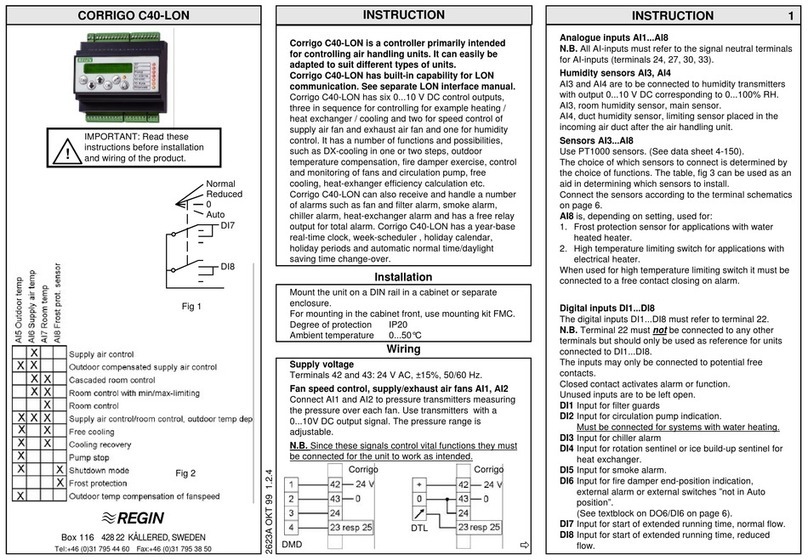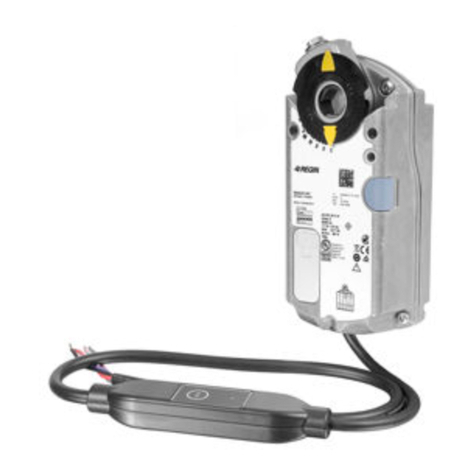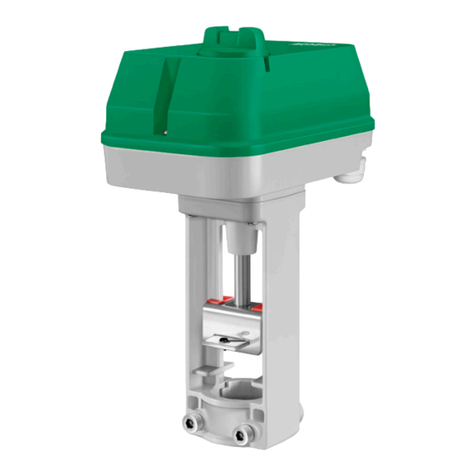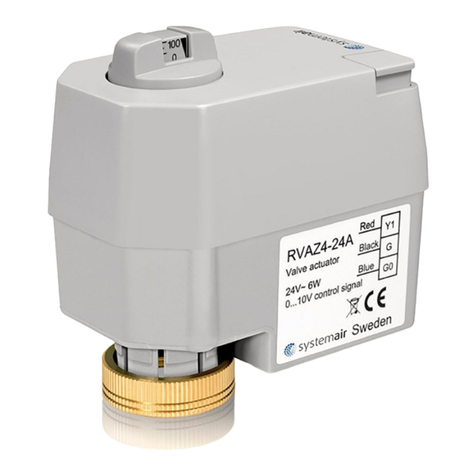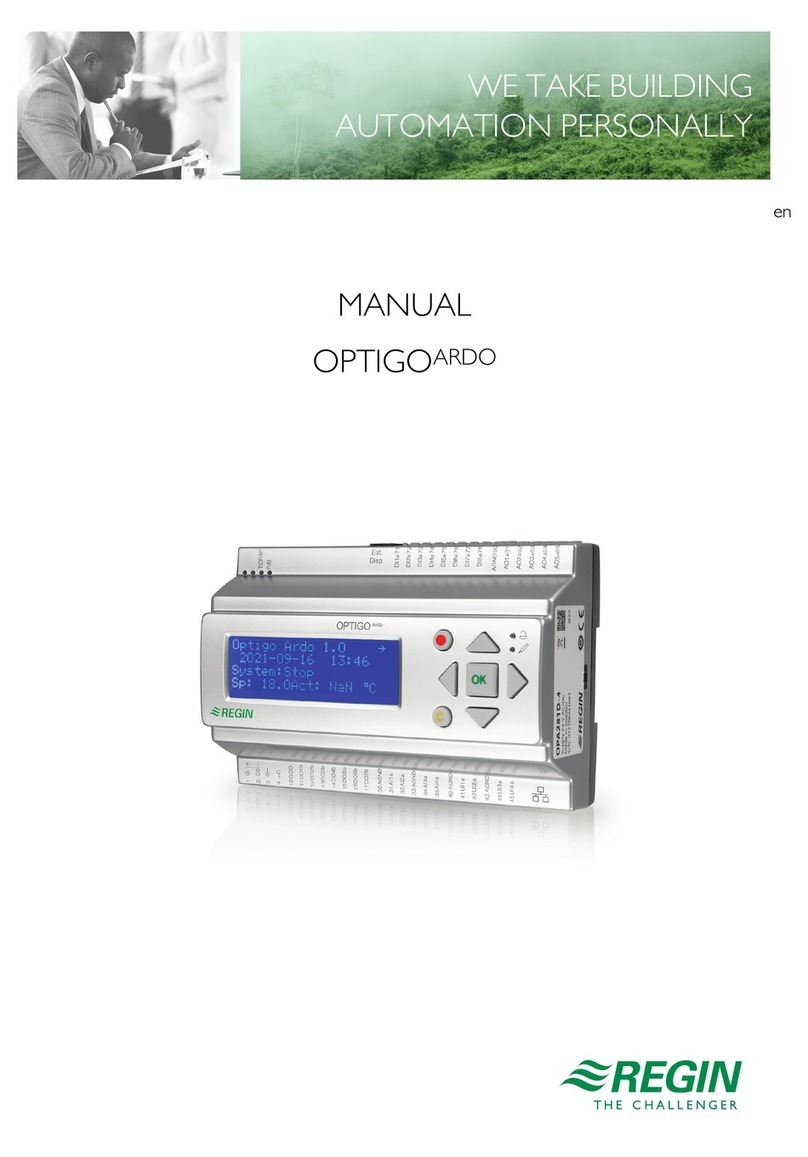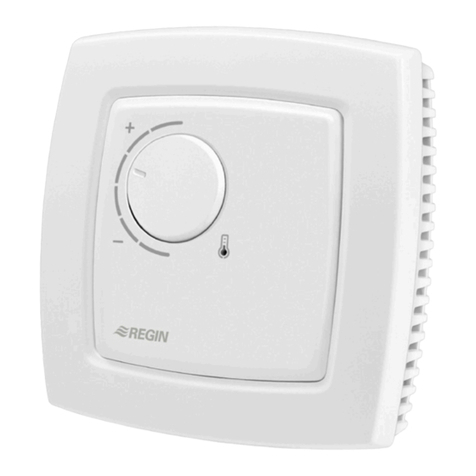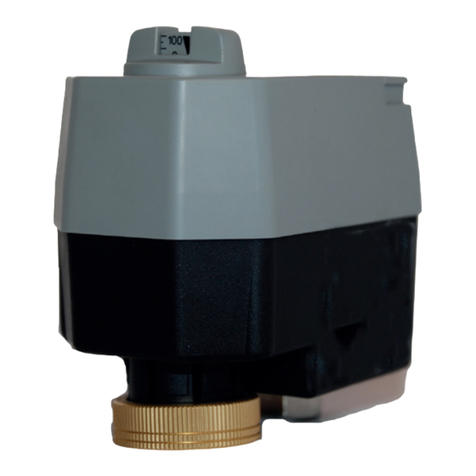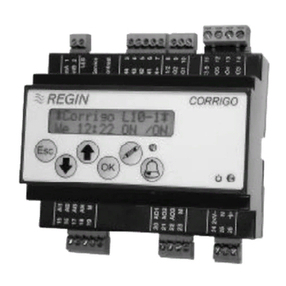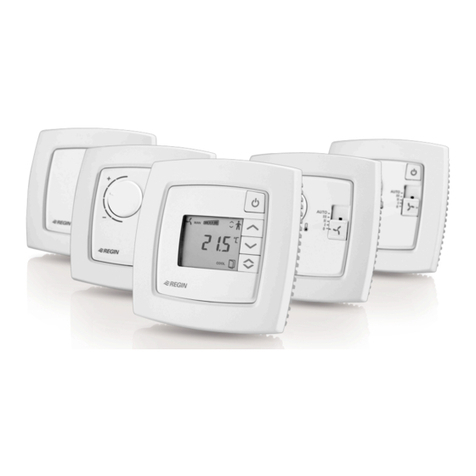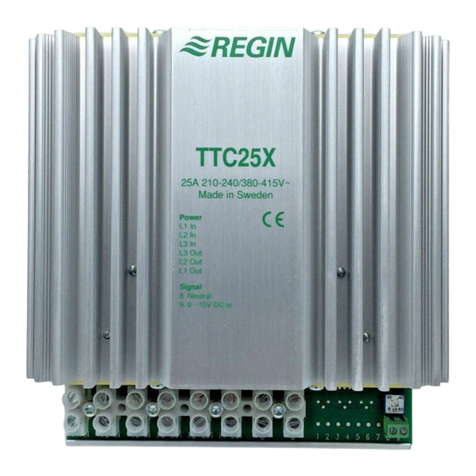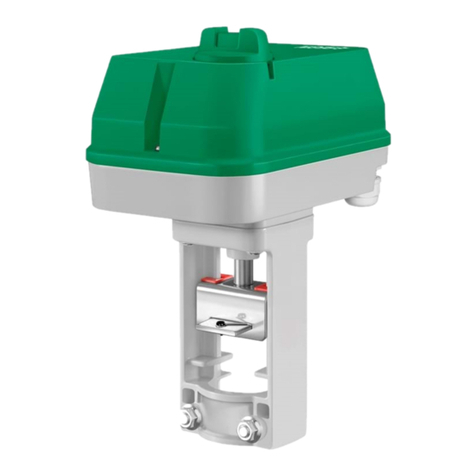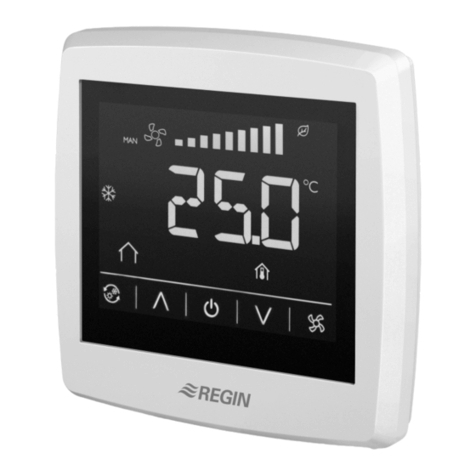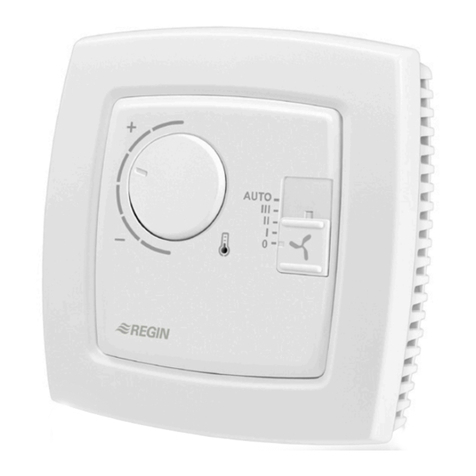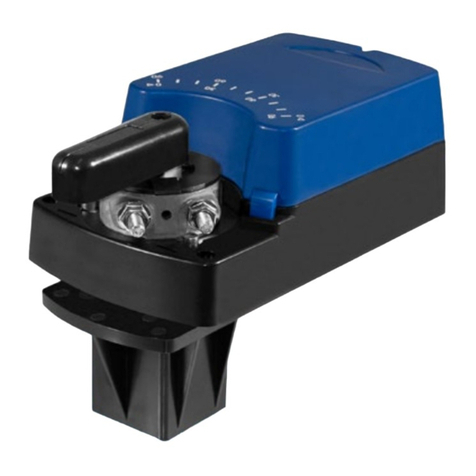
RVAN18-24A 2
1 (On) 0 (Off)
SW1 Spindle down when the
valve is closed
Spindle up when the valve is
closed (FS=factory setting)
SW2 Y = 2...10 V DC Y = 0...10 V DC (FS)
SW3 Reverse operation Direct operation (FS)
SW4 Y signal split in accordance
with the setting of SW5
No split function (FS)
SW5 5(6)...10 V = 0...100 % 0(2)...5(6) V = 0...100 % (FS)
SW1 Operational direction of the valve
On: The valve is closed when the stem is in its lowest position.
Off: The valve is closed when the stem is in its highest position.
SW2 Control signal
On: 2...10 V DC
Off: 0...10 V DC
The actuator can also be connected to a 4...20 mA control signal.
In this case, a 500 Ohm resistor should be installed between the
control signal input (terminal 3) and system neutral (terminal 2)
and SW2 should be set to position On (2...10 V DC).
The control signal will then be converted to 2...10 V DC.
SW3 Reverse/Direct operation
On: Reverse operation. The actuator closes the valve on increasing
control signal.
Off: Direct operation. The actuator opens the valve on increasing
control signal.
SW4 Split function
On: Split function. Two actuators can share a control signal and work
in sequence.
Off: No split function.
SW5 Working range when using split function
On: 5…10 V= 0…100 % (6…10 V when SW2=On)
Off: 0…5 V= 0…100 % (2…6 V when SW2=On)
LEDs
The actuator has two LEDs with indications according to the table below.
Indication
Green steady light Actuator working properly
Green light quick ashing Test run in progress
Green light slow ashing The setting was changed during the
operation. The new setting will be
valid after the next power on.
Red and green steady light End position reached
Red light slow ashing Override operating mode
Red steady light Operation faulty, either the improper
installation or the valve stroke lost
End position markers
There is a red and a blue plastic end position marker on the actuator
linkage. The markers can easily be moved in order to show when the
actuator is closed/open for heating/cooling.
For heating valves, the red marker should be in the completely open valve
position and the blue marker in the completely closed valve position.
For cooling valves, the blue marker should be in the completely open
valve position and the red marker in the completely closed valve position.
EMC emissions & immunity standards
This product conforms to the requirements of the EMC Directive
2004/108/EC through product standards EN 60730-1:2000 and
EN 60730-2-14:1997.
RoHS
This product conforms with the Directive 2011/65/EU of the European
Parliament and of the Council.
Contact
AB Regin, Box 116, 428 22 Kållered, Sweden
Tel: +46 31 720 02 00, Fax: +46 31 720 02 50
Ventilställdon för 0(2)...10 V-styrning
RVAN18-24A är ett ventilställdon för styrning av Regins ventilsorti-
ment. Ställdonet har automatisk slaglängdsjustering och går att styra
manuellt.
Tekniska data
Matningsspänning 24 V AC ±15 %, 50/60 Hz
eller 24 V DC ±15%
Styrsignal 0(2)...10 V DC
Effektförbrukning Max. 8 W
Slaglängd 10...52 mm
Ställtid 3 s/mm
Ställkraft 1800 N
Omgivningstemperatur 0...50°C
Lagringstemperatur -40...80°C
Omgivande luftfuktighet 10...90 % RH
Dimensioner (BxHxD) 198 x 309 x 133 mm
Skyddsklass IP54
Installation
Om spindeltopp och ventilhalsadapter inte redan är monterade på
ventilen, montera dem. Dra ut ventilspindeln så långt det går.
Ta bort skruvarna (insexnyckel 6 mm) och klämman från ställdonets
ok.
Tryck in den fjädrande brickan på drivspindelns kopplingsanordning
och passa in spindeltoppen i kopplingen.
Släpp brickan för att koppla ventilen till ställdonet. Okets läge på ven-
tilhalsadaptern justeras så att klämmans skruvhål kommer i linje med
spåret på ventilhalsadaptern. Om drivspindeln behöver yttas in eller
ut för att detta ska ske, tryck ned mittknappen på manöverratten och
vrid denna medurs för att ytta ut spindeln och moturs för att ytta in
spindeln (se Manuell överstyrning). Montera skruvarna och klämman.
Dra åt skruvarna så att ställdonet sitter stadigt fast.
Nedmontering i omvänd ordning.
INSTRUKTION
RVAN18-24A
SV
Läs denna instruktion innan produkten monteras
och ansluts

